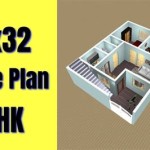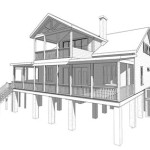House building planning is the process of conceiving, designing, and constructing a new house. It involves a wide range of tasks, from selecting a suitable piece of land to obtaining planning permission, and from designing the house to overseeing its construction. House building planning is a complex and challenging process, but it is also an exciting one. It is a chance to create a home that is perfect for your needs and to make your dreams a reality.
One of the most important aspects of house building planning is to decide what kind of house you want. There are many different types of houses to choose from, each with its own unique set of advantages and disadvantages. You need to consider your lifestyle, your family’s needs, and your budget when making this decision. Once you have decided on the type of house you want, you can start to develop a plan for its construction.
The main body of this article will discuss the different stages of house building planning in more detail. We will cover everything from selecting a site to obtaining planning permission, from designing the house to overseeing its construction. We will also provide tips and advice to help you make the most of this exciting process.
House building planning is a complex process, but it is also an exciting one. It is a chance to create a home that is perfect for your needs and to make your dreams a reality. Here are 10 important points to keep in mind when planning your house:
- Choose the right location.
- Get planning permission.
- Design the house.
- Choose the right builder.
- Set a budget.
- Get the necessary permits.
- Oversee the construction.
- Inspect the house.
- Move in!
- Enjoy your new home.
By following these steps, you can ensure that your house building project is a success.
Choose the right location.
The location of your house is one of the most important factors to consider when planning your build. The right location can make all the difference to your quality of life, so it’s important to take your time and choose carefully.
There are a number of factors to consider when choosing a location, including:
- Proximity to amenities. How close is the location to schools, shops, public transport, and other amenities? You want to choose a location that is convenient for your everyday needs.
- Access to green space. Do you want to live near a park, a forest, or other green space? Access to green space can improve your physical and mental health, and it can also be a great place to relax and unwind.
- Crime rates. You’ll want to choose a location with a low crime rate. This will help to ensure your safety and the safety of your family.
- Noise levels. How noisy is the location? You don’t want to choose a location that is too noisy, as this can make it difficult to sleep and relax.
- Air quality. The air quality in your location can also affect your health. You’ll want to choose a location with good air quality, especially if you have any respiratory problems.
- Natural hazards. Is the location at risk of natural hazards, such as flooding, earthquakes, or wildfires? You’ll want to choose a location that is safe from these hazards.
Once you have considered all of these factors, you can start to narrow down your choices. It’s a good idea to visit potential locations in person and talk to people who live there. This will help you get a better sense of the area and whether or not it’s the right place for you.
Choosing the right location is an important part of house building planning. By taking your time and considering all of the factors involved, you can choose a location that is perfect for your needs.
Get planning permission.
Planning permission is a legal requirement for most new builds and major renovations. It is a process that ensures that your proposed development is in line with local planning policies and that it will not have a negative impact on the surrounding area.
The planning permission process can be complex and time-consuming, so it is important to start the process as early as possible. The first step is to submit a planning application to your local planning authority. The application will need to include a detailed description of your proposed development, as well as plans and drawings. The planning authority will then assess your application and make a decision on whether or not to grant planning permission.
- The planning authority will consider a number of factors when making their decision, including:
- The design of your proposed development.
- The impact of your proposed development on the surrounding area.
- The local planning policies.
- Any objections that have been raised to your proposed development.
If your planning application is approved, you will be granted planning permission. This will allow you to start work on your proposed development. However, it is important to note that planning permission can be subject to conditions. For example, the planning authority may require you to make changes to the design of your proposed development or to take steps to mitigate the impact of your development on the surrounding area.
Getting planning permission can be a complex and time-consuming process, but it is an important step in the house building planning process. By starting the process early and by working closely with your local planning authority, you can increase your chances of getting your planning application approved.
Design the house.
Once you have planning permission, you can start to design your house. This is an exciting stage in the house building planning process, as it is your chance to create a home that is perfect for your needs.
There are a number of factors to consider when designing your house, including:
- The size of the house. How many bedrooms and bathrooms do you need? How much living space do you need? You need to design a house that is big enough to meet your needs, but not so big that it is too expensive to build or maintain.
- The layout of the house. How do you want the rooms in your house to be arranged? Do you want an open-plan layout or a more traditional layout? You need to design a layout that works for your lifestyle and that makes sense for the way you live.
- The style of the house. What style of house do you want? There are many different styles to choose from, including traditional, modern, contemporary, and rustic. You need to choose a style that you love and that fits in with the surrounding area.
- The materials used to build the house. What materials do you want to use to build your house? There are a variety of materials to choose from, including brick, stone, wood, and concrete. You need to choose materials that are durable, affordable, and that suit the style of your house.
Once you have considered all of these factors, you can start to develop a design for your house. It is a good idea to work with an architect or a designer to create a design that meets your needs and that is also feasible to build.
Designing your house is an important part of the house building planning process. By taking your time and considering all of the factors involved, you can create a design that is perfect for your needs.
Choose the right builder.
Choosing the right builder is one of the most important decisions you will make during the house building planning process. The builder you choose will be responsible for turning your design into a reality, so it is important to choose someone who is experienced, reputable, and who you can trust.
There are a number of factors to consider when choosing a builder, including:
- Experience. How much experience does the builder have? How many houses have they built? You want to choose a builder who has a proven track record of success.
- Reputation. What is the builder’s reputation? Have they built homes for other people in your area? What do those people say about their experience?
- Trust. Do you trust the builder? Do you feel comfortable working with them? You need to choose a builder who you can trust to do a good job and who will be there for you if you have any problems.
- Price. How much will the builder charge to build your house? Get quotes from several different builders before you make a decision. You want to choose a builder who is affordable, but you also want to make sure that you are getting a good value for your money.
Once you have considered all of these factors, you can start to narrow down your choices. It is a good idea to visit potential builders in person and talk to people who have worked with them. This will help you get a better sense of the builder’s experience, reputation, and trustworthiness.
Choosing the right builder is an important part of the house building planning process. By taking your time and considering all of the factors involved, you can choose a builder who will help you build your dream home.
Set a budget.
One of the most important things you need to do when planning to build a house is to set a budget. This will help you to determine how much money you can afford to spend on your project and will help you to make informed decisions throughout the planning and building process.
There are a number of factors to consider when setting a budget for your house build, including:
- The cost of the land. The cost of the land will vary depending on the location and size of the property. You need to factor in the cost of the land when setting your budget.
- The cost of the materials. The cost of the materials will also vary depending on the type of materials you choose. You need to research the cost of different materials before you set your budget.
- The cost of labor. The cost of labor will also vary depending on the location and the type of labor you need. You need to get quotes from different contractors before you set your budget.
- The cost of permits and fees. You will also need to factor in the cost of permits and fees when setting your budget. The cost of permits and fees will vary depending on the location and the size of your project.
Once you have considered all of these factors, you can start to set a budget for your house build. It is important to be realistic when setting your budget. You need to make sure that you have enough money to cover all of the costs involved in building your house.
It is also important to have a contingency fund in place. A contingency fund is a sum of money that you set aside to cover unexpected costs. Unexpected costs can arise at any time during the building process, so it is important to have a contingency fund in place to cover these costs.
Setting a budget is an important part of the house building planning process. By taking the time to set a realistic budget, you can ensure that you have enough money to cover all of the costs involved in building your house.
Get the necessary permits.
Once you have a design for your house and have chosen a builder, you will need to get the necessary permits before you can start construction. The permits you need will vary depending on the location of your property and the size and scope of your project. However, there are some general permits that are required for most house builds, including:
- Building permit. A building permit is required for any new construction or major renovation. The building permit will ensure that your house is built in accordance with the local building codes.
- Electrical permit. An electrical permit is required for any electrical work that is done on your house. The electrical permit will ensure that your electrical system is safe and up to code.
- Plumbing permit. A plumbing permit is required for any plumbing work that is done on your house. The plumbing permit will ensure that your plumbing system is safe and up to code.
- HVAC permit. An HVAC permit is required for any HVAC work that is done on your house. The HVAC permit will ensure that your HVAC system is safe and up to code.
In addition to these general permits, you may also need to obtain other permits, depending on the specific details of your project. For example, if your house is located in a flood zone, you may need to obtain a flood permit. Or, if you are planning to build a pool, you may need to obtain a pool permit.
It is important to check with your local building department to determine which permits are required for your project. You can also contact your local building department to get help with the permit application process.
Getting the necessary permits is an important part of the house building planning process. By obtaining the necessary permits, you can ensure that your house is built in accordance with the local building codes and that it is safe and up to code.
Oversee the construction.
Once you have obtained the necessary permits, you can start construction on your house. It is important to oversee the construction process to ensure that your house is built in accordance with the plans and specifications. You should also oversee the construction process to ensure that the work is being done safely and to a high standard.
- Monitor the progress of the construction. You should visit the construction site regularly to monitor the progress of the construction. This will help you to identify any potential problems early on and to ensure that the construction is on schedule.
- Inspect the work. You should inspect the work as it is being done to ensure that it is being done to a high standard. This includes inspecting the materials being used, the workmanship, and the overall quality of the construction.
- Communicate with the builder. You should communicate with the builder regularly to discuss the progress of the construction and to resolve any issues that may arise. It is important to maintain a good relationship with the builder so that you can work together to build your dream home.
- Make decisions. You will need to make decisions throughout the construction process. These decisions may include choosing materials, approving changes to the plans, and resolving disputes. It is important to make decisions in a timely manner so that the construction process can continue smoothly.
Overseeing the construction process is an important part of the house building planning process. By overseeing the construction process, you can ensure that your house is built in accordance with the plans and specifications, that the work is being done safely and to a high standard, and that you are happy with the final product.
Inspect the house.
Once the construction of your house is complete, it is important to inspect the house thoroughly before you move in. This will help you to identify any defects or problems that need to be fixed. You should also inspect the house regularly after you move in to ensure that it is in good condition and that there are no problems that need to be addressed.
- Check the exterior of the house.
Inspect the exterior of the house for any signs of damage or defects. This includes checking the roof, the walls, the windows, the doors, and the foundation. Look for any cracks, leaks, or other problems that need to be fixed.
- Check the interior of the house.
Inspect the interior of the house for any signs of damage or defects. This includes checking the floors, the walls, the ceilings, the electrical system, the plumbing system, and the HVAC system. Look for any cracks, leaks, or other problems that need to be fixed.
- Check the appliances.
Inspect the appliances in the house to make sure that they are working properly. This includes checking the refrigerator, the stove, the oven, the dishwasher, and the washing machine. Make sure that all of the appliances are working properly and that there are no problems that need to be fixed.
- Check the landscaping.
Inspect the landscaping around the house to make sure that it is in good condition. This includes checking the lawn, the trees, the shrubs, and the flowers. Make sure that the landscaping is well-maintained and that there are no problems that need to be addressed.
Inspecting the house is an important part of the house building planning process. By inspecting the house thoroughly, you can identify any defects or problems that need to be fixed. You should also inspect the house regularly after you move in to ensure that it is in good condition and that there are no problems that need to be addressed.
Move in!
Once the house is complete and has been inspected, it is time to move in! This is an exciting time, but it can also be a bit overwhelming. There are a lot of things to do to get settled into your new home, and it is important to plan ahead.
One of the first things you need to do is to change the locks. This will ensure that you are the only one who has access to your home. You should also make sure that all of the windows and doors are locked when you are not home.
Next, you need to unpack your belongings and start to organize your new home. This can be a time-consuming process, but it is important to take your time and do it right. Once you have everything unpacked, you can start to decorate your home and make it your own.
Finally, you need to take some time to get to know your new neighborhood. This includes meeting your neighbors, learning about the local amenities, and finding out about any community events.
Moving into a new home is a big change, but it is also an exciting one. By planning ahead and taking your time, you can make the move as smooth and stress-free as possible.
Enjoy your new home.
Once you have moved into your new home, it is important to take some time to enjoy it. This is your chance to relax and appreciate all of the hard work that you have put into building your dream home.
- Spend time with your family and friends.
Your new home is a great place to spend time with your family and friends. Invite them over for dinner, have a party, or just relax and enjoy each other’s company.
- Make your home your own.
Decorate your home to reflect your own personal style. Add your favorite furniture, artwork, and accessories. Make your home a place where you feel comfortable and relaxed.
- Get involved in your community.
Get to know your neighbors and participate in community events. This is a great way to meet new people and get involved in your community.
- Relax and enjoy your new home.
Your new home is a place to relax and enjoy life. Take some time to sit back and appreciate all of the hard work that you have put into building your dream home.
Enjoying your new home is an important part of the house building planning process. By taking the time to enjoy your new home, you can create a space that you love and that you will cherish for many years to come.









Related Posts








